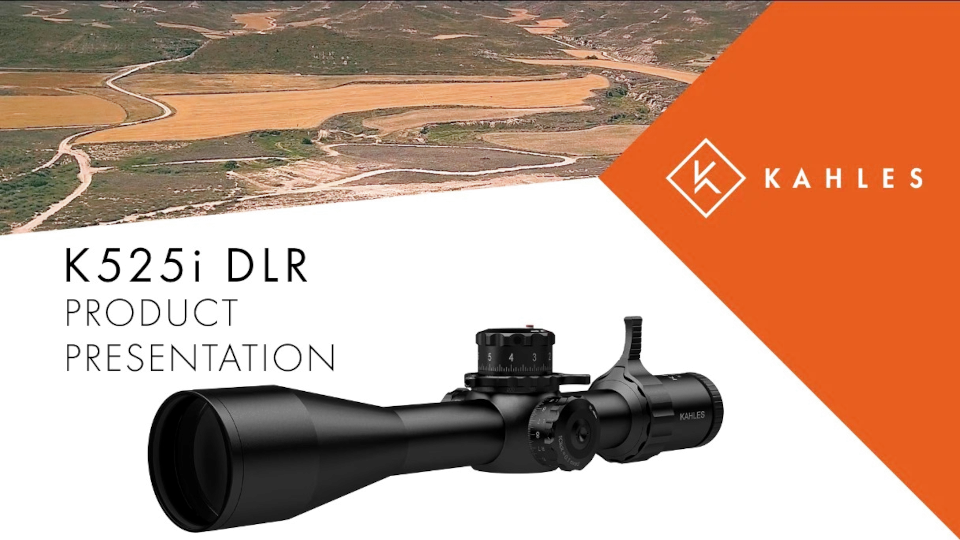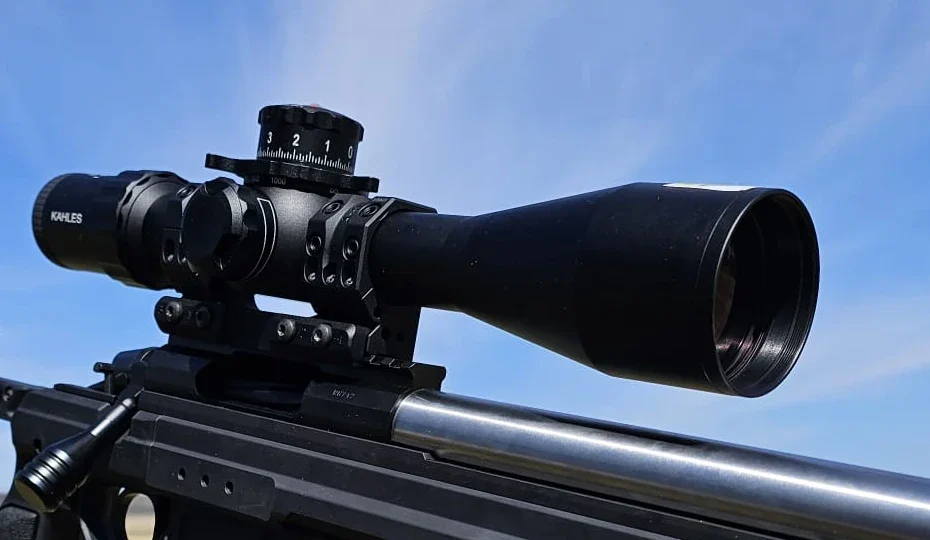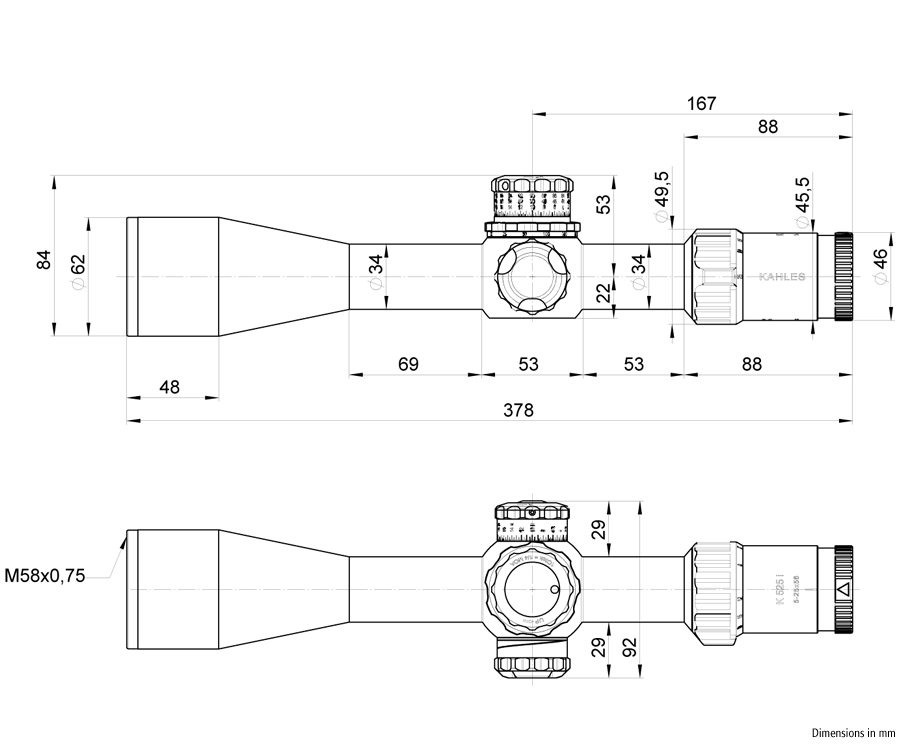Kahles K525i DLR
Description
Kahles K525i DLR is based on the K525i the “DLR” stands for Dynamic Long Range in after the competitions this model was designed for.
Released in January 2021 the key differences over its predecessor are:
- Wider field of view.
- Prominent, clear click markings.
- Extra long throw lever and parallax spinner.
- SKMR reticle.
- Left or right side windage.
K525i DLR Presentation Video
Specifications
| Magnification | 5-25 |
|---|---|
| Objective lens diameter (mm) | 56 |
| Exit pupil diameter (mm) | 9.5-2.3 |
| Eye relief (mm) | 95 |
| Field of view (m/100m) | 7.7 / 1.6 |
| Diopter compensation (dpt.) | +2 / -3.5 |
| Twilight factor (ISO 58388) | 16.7-37.4 |
| Parallax adjustment (m) | 20-∞ |
| Impact correction per click | 0.1 MRAD |
| Adjustment range E/W (m/100m) | 2.9/1.3 |
| Adjustment direction | Counter Clockwise |
| Windage | right/left |
| Tube diameter (mm) | 34 |
| Zero Stop | TRUE |
| TWIST GUARD | TRUE |
| Objective filter thread | M58 x 0.75 |
| Length (mm) | 377 |
| Weight (g) | 995 |
| Focal plane | 1st |
| Reticle (illuminated) | SKMR/SKMR4 |
| Battery type | CR2032 |
| Warranty (years) | 10 (2 electronic) |
| Accessories (included) | Throw Lever, Parallax Spinner with engraving |
Components
Objective lens
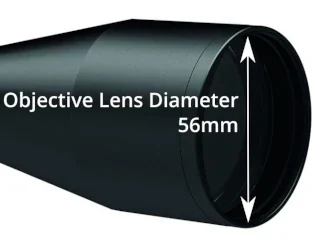

A big objective lens is not always needed for more light, particularly on a clear sunny day in rural Australia. When things get a bit darker, dusk, dawn or just a cloudy day it sure is nice. The field of view is also impressive for a scope, making it easier see and acquire targets.
Probably the most common comment when people first look through this scope is…..
Damn, it's clear!
Unsurprising given Kahles reputation for optical clarity in their scopes.
The front of the objective bell is threaded for a filter. Not always needed but a mild filter can act as an extra level of protection for the objective lens in rough conditions.
Read more:
Ocular Lens
A standard ocular lens with a diopter compensation (focus) ring. The focusing steps are simple:
- Turn the focus ring until you get a sharp reticle image.
- Adjust the parallax wheel until the image is sharp and the reticle does not move on the target if you shift your head.
- Rotate the magnification or power ring/lever do the desired magnification.
Read more:

Magnification
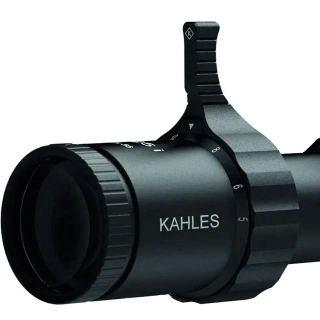
Magnification is adjusted by the power ring and a dirty big lever. Pretty good for making quick adjustments without removing your eye from the target.
It is 5 to 25 power with markings incremental at :
- 5
- 6
- 8
- 12
- 15
- 18
- 25
The numbers are fixed into position so the arrow rotates along with the lever. You can see where magnification is sitting just by a quick glance at the throw lever.
Milliradian (MRAD)
Click adjustments are in Milliradians (MRAD) and it is 0.1 MRAD per click. Which is nice and easy as 1 MRAD = 100mm at 100m. So 1 click at 100m = 100 x 0.1 = 10mm.
A note here on terminology. MRAD is quite often referred to as MIL (short for Milliradian). It is not MIL (NATO).
Read more:
Tube Diameter

A tube diameter of 34mm is reasonably common in so called “tactical” scopes now. The K525i DLR is no exception.
This essentially gives plenty of room for elevation adjustment without having to mess around with +MRAD rail mounts.
Read more:
Elevation
The elevation turret is excellent in my view (pun intended). Kahles call it “EasyRead” and, well, it is just, that with lovely large lettering.
There are only 100 solid clicks per rotation compared to the usual Kahles standard of 140 or 160.

Windage
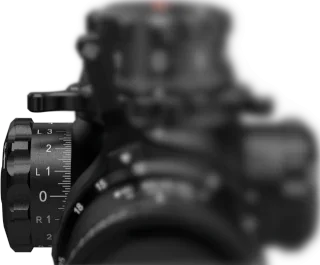
A choice of left or right side windage? Yes!
If you are left handed or like to keep your finger close to the trigger as a right hander this is a very nice option. Again, as with the elevation the click detents are solid and you can choose to have the adjustments CW (clockwise) or CCW (counter clockwise).
Kahles also have a feature they call TWIST GUARD which helps prevent involuntary rotation of the turret.
Zero Stop
The Zero Stop is a physical stopping point 3 or 4 clicks below the zero arrow on the elevation turret and can be set once the scope and rifle have been zeroed at whatever distance.
What this means is that after you have sent a few rounds down range you can blindly wind down the elevation until you hit the Zero Stop and you are good to start again. There is an allen-key stored in the side turret with the battery to adjust.
Oh! Just a word of advice. Do not take the screw all the way out in case you drop the tiny sucker and spend 10 minutes trying find the dang thing. (Do not ask me how I know this!)
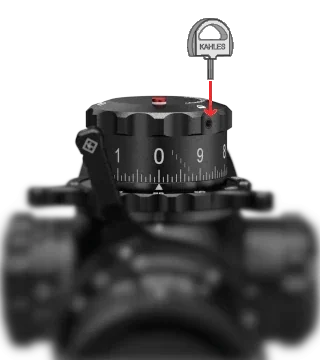
Parallax
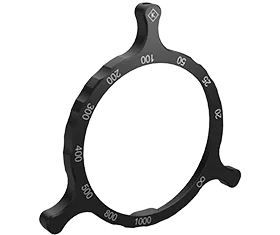
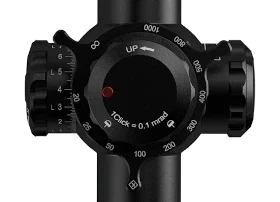
As far as Parallax adjustments go this is a biggy, and, in our view, works very well.
Incremental adjustments (meters):
- 20
- 25
- 50
- 100
- 200
- 300
- 400
- 500
- 800
- 1000
- ∞
Kahles remarks are that this huge parallax spinner is for quick adjustment . Yes, a tick in that box.
Read more:
Reticle
The SKMR reticle (Shannon Kay Milling Reticle) was developed by Major (Retired) Shannon Kay, a keen Precision Rifle Series shooter himself and principle of KM Precision Rifle Training.
Less busy or cluttered than the SKMR4 reticle it has proven to be very popular amongst many high level competition shooters.
The K525i comes with a choice of reticles:
- SKMR
- SKMR4
Read more:
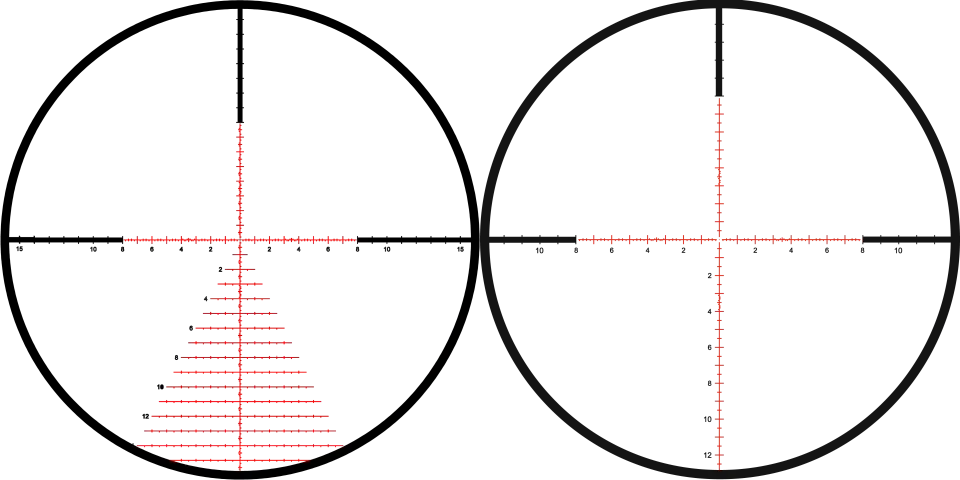
Reticle illumination
The reticle illumination is a simple switch activated by rotating the turret (opposite your windage, whatever side that may be). Powered by a CR2032 battery it is located under the turret cover.
Located here also is an allen-key for the turret screws.


1st Focal Plane
A change in magnification also affects the reticle size when viewed in the first focal plane. This means that the subtensions or bar spacing on the reticle remain the same.
This typically can make the reticle markings hard to see at low power, however the K525i’s illuminated reticle goes some way to help with this.
First Focal Plane (FFP) – The reticles located at the FFP change in size when you change the power or zoom on the scope.
Operation
Kahles K525i DLR – User Manual


